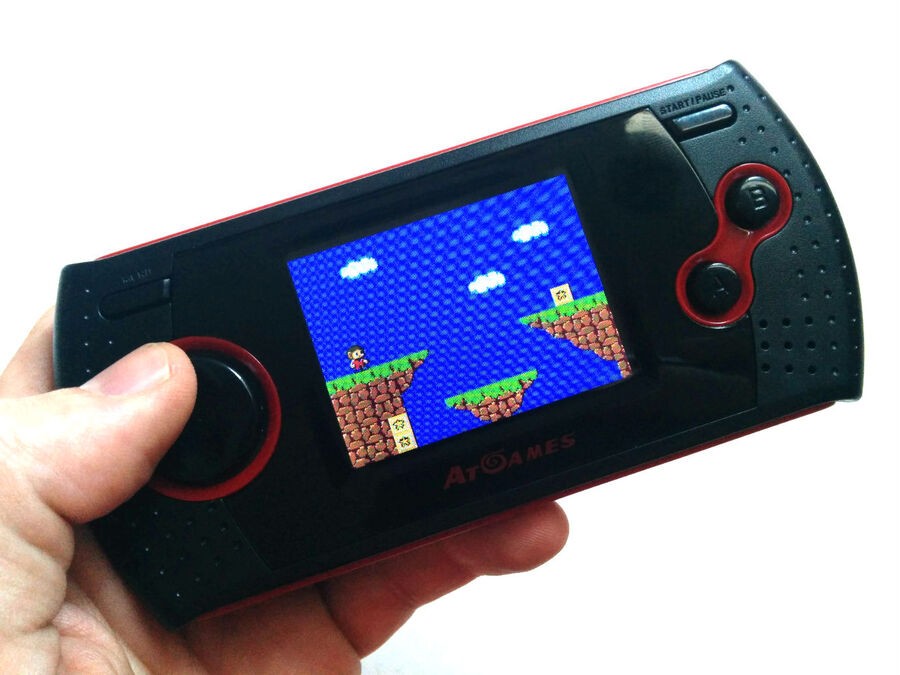
Nintendo may be fiercely protective of its vintage games and retro hardware, but former rival Sega isn't quite so precious about where its former classics end up these days. We've already seen the likes of Sonic, Golden Axe and Streets of Rage migrate to practically every modern format under the sun — including PC, iOS and of course the Wii Virtual Console — and Sega has also been more than happy to allow third-party manufacturers to produce clones of its past systems under official license.
One of the most prolific of these clone-makers is AtGames. This firm has already produced products based on the Sega Mega Drive / Genesis, and even cast its gaze farther back into the mists of time to bring the 8-bit Master System (and its largely-identical portable sibling, the Game Gear) to a new generation of players. Ladies and gentlemen, we present to you the "Arcade Gamer Portable" — or, to be more precise, a handheld which doesn't actually have any coin-op pedigree but instead plays emulated versions of old Master System and Game Gear titles. Bizarrely, the packaging doesn't mention either of these systems, instead choosing to allow the games themselves to do the talking.
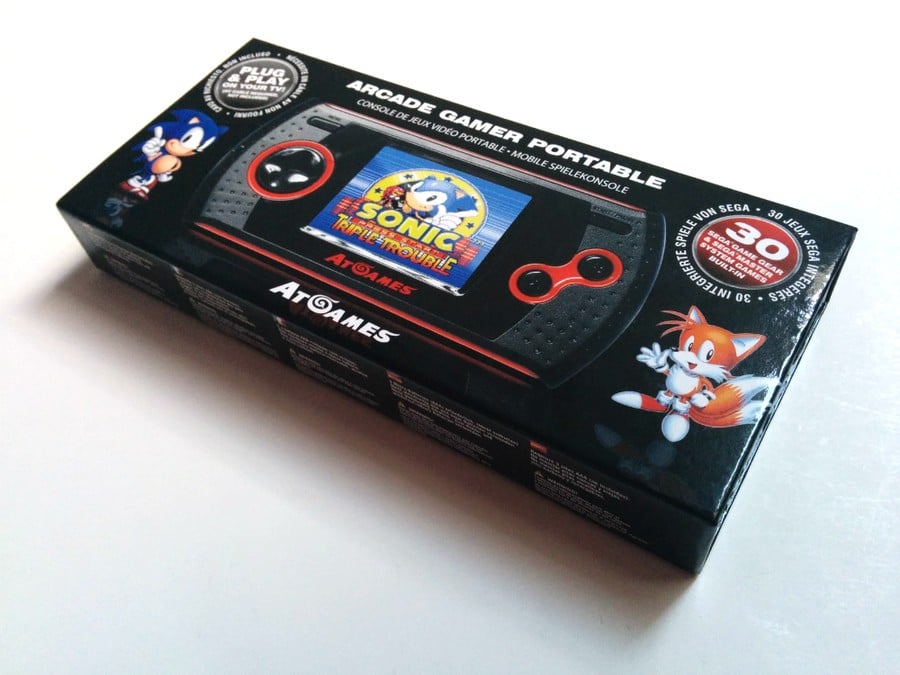
It's not a bad strategy, to be honest — names like Sonic the Hedgehog, Alex Kidd, Ecco the Dolphin, Golden Axe and Fantasy Zone will arguably mean more to most players than the format that they were originally released on. This piece of hardware contains not one but four Sonic titles (five if you consider Dr. Robotnik's Mean Bean Machine to be part of the mainline Sonic series, rather than a spin-off) and three Alex Kidd adventures — Miracle World, Lost Stars and High Tech World (Shinobi World is sadly absent).
Here's the full list of games:
- Alex Kidd in High Tech World
- Alex Kidd in Miracle World
- Alex Kidd: The Lost Stars
- Assault City
- Astro Warrior
- Aztec Adventure
- Baku Baku Animal
- Bomber Raid
- Columns
- Dr. Robotnik’s Mean Bean Machine
- Dragon Crystal
- Ecco: The Tides of Time
- Fantasy Zone
- Fantasy Zone II
- Gain Ground
- Global Defense
- Golden Axe
- Kung Fu Kid
- Penguin Land
- Putt And Putter
- Quartet
- Ristar the Shooting Star
- Snail Maze
- Sonic Drift 2
- Sonic Chaos
- Sonic Spinball
- Sonic Triple Trouble
- Super Columns
- Tails Adventure
- The Ninja
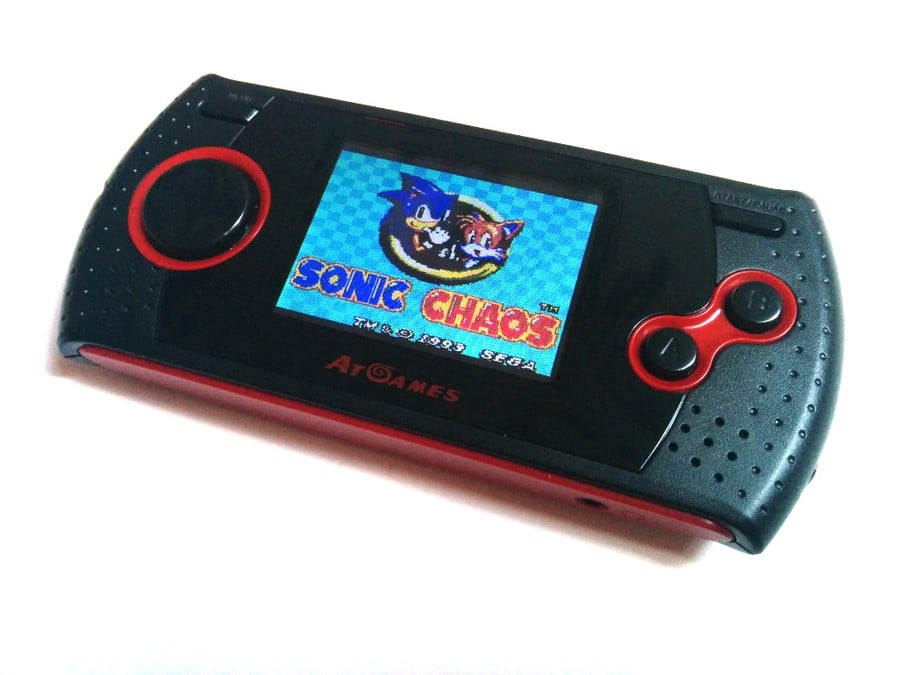
Sticking with the software selection for a moment, there are some excellent choices here, but some equally puzzling ones. Where are the Wonder Boy games? Why no Shinobi? These games have been omitted in favour of Assault City, Global Defense and Snail Maze — the latter of which was a "secret game" in the original Master System hardware which was amusing for about five minutes, and even then you only played it because it was "hidden" and felt special as a result. Granted, Sega veterans might find the inclusion of this oddity a bonus, but few would argue that it deserves a place on this system and the likes of Wonder Boy III: The Dragon's Trap do not.
Complaints aside, there's no denying that there are some fine pieces of software on the Arcade Gamer Portable. Fantasy Zone and its Master System-exclusive sequel Fantasy Zone II: Tears of Opa Opa are both excellent (the latter of which has recently been remastered for the 3DS in Japan), and the Game Gear version of Ristar is well worth a look, if only to see how closely it matches the 16-bit original. Baku Baku Animal is an excellent way to pass the time, as is Super Columns — both of which neatly satisfy the desire for short-burst puzzle fixes. Even titles which you may have dismissed back in the day — such as Rogue-like Dragon's Crystal and the crusty old arcade port Quartet — are curiously compelling when played on a super-portable system such as this.
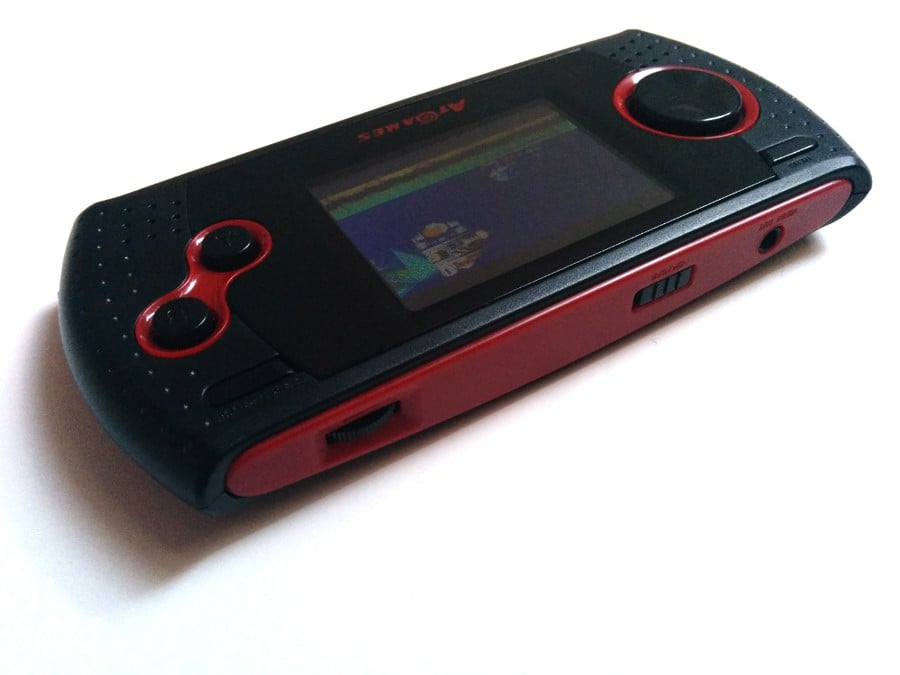
Sadly, unlike the Mega Drive Arcade Ultimate, there's no SD card slot and therefore no way to augment the selection of 30 available games. This is something of a disappointment when you consider how handy such a feature was on AtGames' other Sega-focused handheld, but the low price of the system mitigates the issue somewhat.
In terms of design, the Arcade Gamer Portable is a close match for the aforementioned Mega Drive Arcade Ultimate. They both sport the same basic design, which is held in landscape orientation and boasts a surprisingly ergonomic profile. The D-pad is a circular disc with a concave middle section which forms a star-shape, allowing your thumb to "feel" for the four main directions. It takes some getting used to — most pads usually have the opposite arrangement, with the centre being raised — but within a few minutes you'll have become accustomed to it.
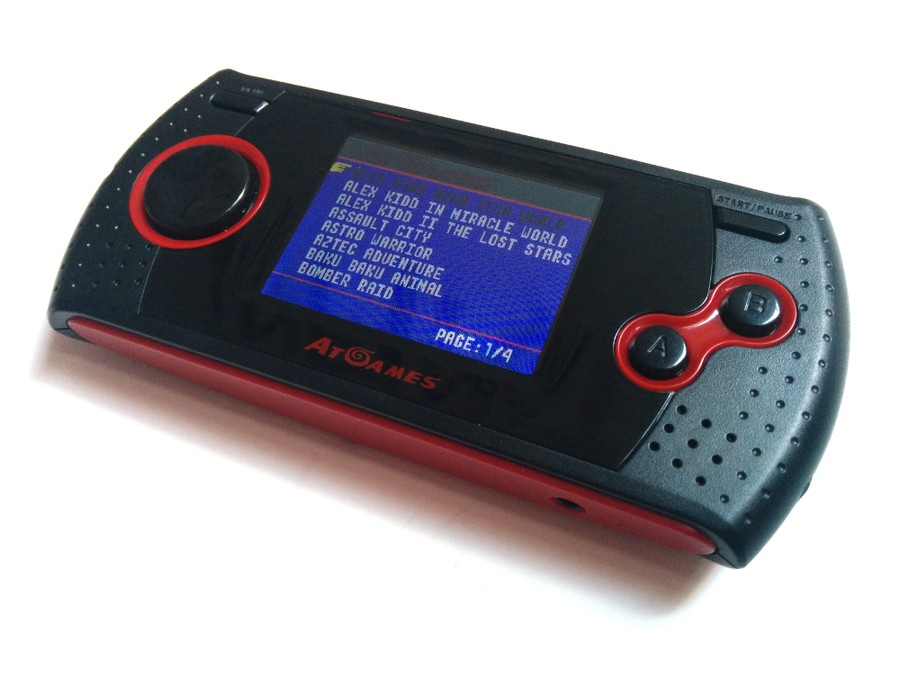
Elsewhere, the two action buttons are responsive enough, and there's also a key which doubles as a pause or start button — the reason being that the Master System didn't have a start button, but instead used a button on the main console to pause the action. The Game Gear, on the other hand, had a start key which controlled both functions. There's initially some confusion when playing on the Arcade Gamer Portable because when you're playing a Master System title and it prompts you to "press start", what it actually means is press button one.
The console's backlit 2.4-inch LCD screen is something of a mixed bag; while it's bright, colourful and doesn't showcase any ghosting, the pentile pixel arrangement means that everything looks a bit fuzzy close up. Text can often be difficult to read as a result, and the overall image generally lacks the sharp quality naturally associated with pixel-based graphics of the period. Also, when playing Game Gear titles, the image is often stretched to fill more of the screen, which results in a distorted picture. These aren't necessarily deal-breaking problems, and overall the otherwise excellent quality of the display is enough to make up for any shortcomings, but stuff like optimising the resolution is something that could have been handled by AtGames quite easily.
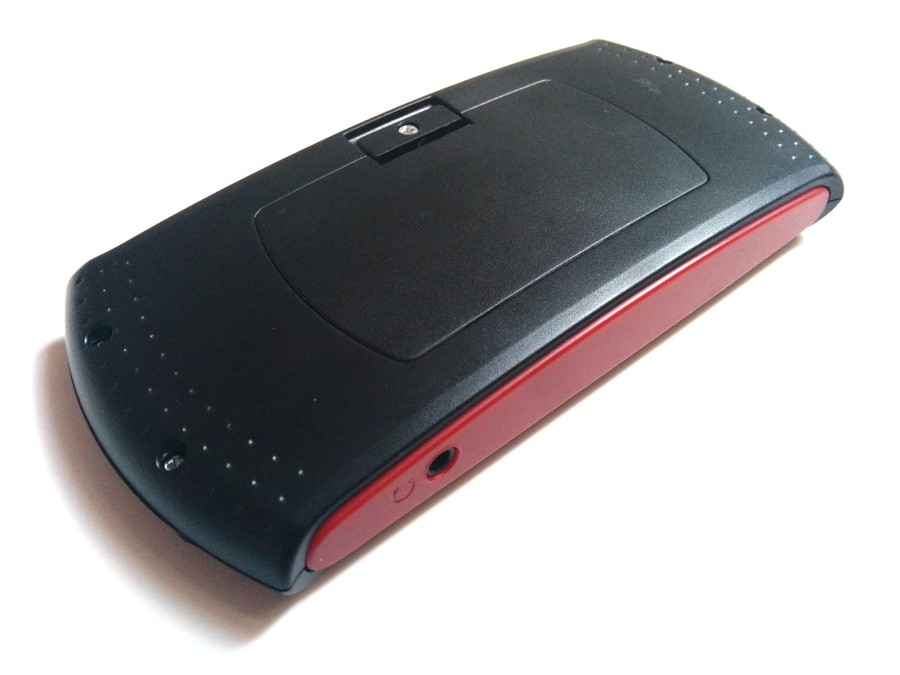
The Arcade Gamer Portable is powered by three AAA batteries, which is a step down from the Mega Drive Arcade Ultimate's internal rechargeable power cell. You can also connect the console to your television with an AV cable, but sadly one isn't included in the box. The quality isn't spectacular, but it's no worse than running a Master System on a big-screen via an RF connection, like we used to in the good old days.
One final point to cover is the audio quality. The Master System wasn't blessed with the best sound capabilities in the world, and even the best soundtracks for the console bordered on the unlistenable at times. The Arcade Gamer Portable's feeble mono speaker does little to enrich the already grating 8-bit audio, but at least the beeps and squeals don't appear to suffer from any noticeable distortion.
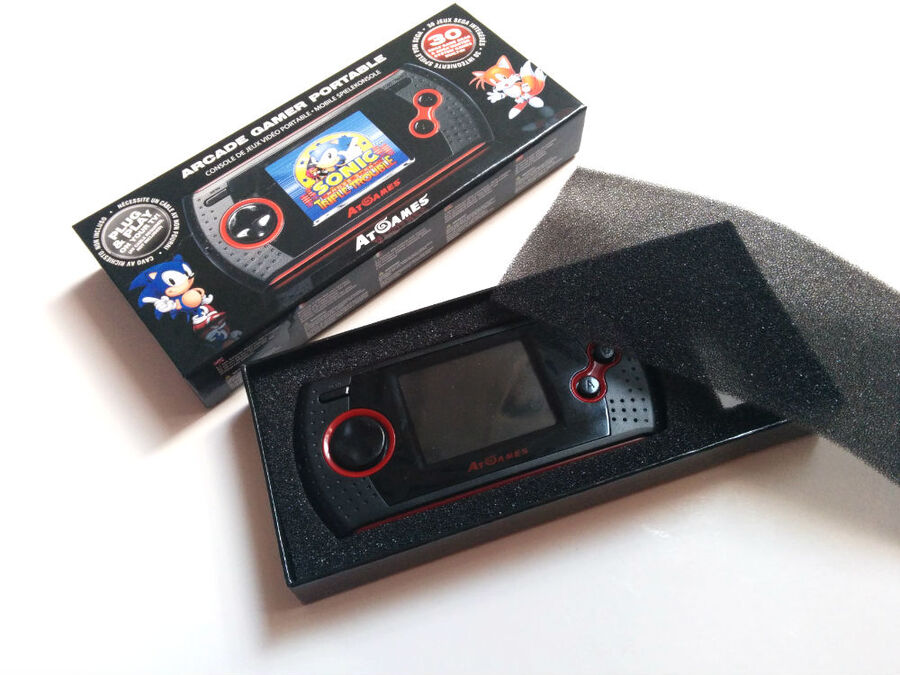
While the Arcade Gamer Portable isn't a perfect product, the small form factor, above-average screen and generally decent controls make up for the few quibbles we have. There selection of games is mostly excellent, and when you take into account the price — £24.99 ($42 / 31 Euros) at the time of writing — then it's even harder to grumble with any degree of conviction. If you're looking to educate a younger member of your family in the way of classic games — or you're a lapsed Sega fan who wants to reacquaint themselves with some 8-bit goodness — then you can certainly do a lot worse than pick one of these up. It's small, cheap and the perfect carry-everywhere answer to your portable entertainment needs.
Kind thanks to Funstock.co.uk for providing the unit used in this review.





Comments 30
it's a shame no one makes a clone system that plays Game Gear carts on your TV with screen options. Now THAT would be worth buying...
Had they managed a few of the RPGs on there like the original Phantasy Star I would be ordering now. Still, this is very tempting to relive some of my childhood Game Gear games.
@Darknyht There's no way of saving games, though - so RPGs are off the menu.
Shinobi world was the best one
Bonus points for making it look like a VHS tape (bottom photo).
Also kind of looks like Ngage
This thing will be $20 by the holidays and it will sell well enough for AtGames or they wouln't keep making them:
http://www.atgames.net/front/bin/ptlist.phtml?Category=100719
Ristar <3
Horrible A and B button placement.
I have the Blaze rendition of this. It is worth the money. Sturdy enough little portable.
My biggest problem with these things other than the sound is the lack of a saving feature. Would've been nice to play the Phantasy Star and Shining games on these.
Don't get Atgames' things, I got their Genesis once and it was really low quality on everything, clone systems are NEVER good. I don't trust Atgames, and I wouldn't advise you to. JUST GET THE REAL THING. P.S. That goes for every system out there. P.P.S. Don't give me critisizim comments.
This looks like a hunk of 80s junk, but it is affordable
no alex kid in shinobi worls = no buy
@Damo That is sad, but I guess I can't expect much from a knock-off Chinese gaming device. Still since Master System/Game Gear games are not coming to the Wii U anytime soon nor do I plan on getting a 2DS/3DS, this may be the best way for me to play Columns, Sonic (Game Gear/Master System version) and Dragon Quest/Crystal. That alone makes up 60% of the game gear games I owned (Spiderman and Shinobi being the other two).
@Darknyht its not a knock off if its licensed by SEGA
The funny thing about these systems is that they keep Sega's name on a console on the shelf in the video game section right next to the big three and their modern hardware.
Being a Sega fanboy, it brings a smile to my face when I see these systems.
Although, the irony is that the Genesis keeps on outliving the SNES and its other rivals from that since the hardware keeps coming back in new forms and is still on store shelves alongside newer and far more powerful systems.
I own the portable Genesis and the At Games Genesis system, and they are great little systems to have. I may pick this one up if it drops in the US.
That's a surprisingly slim list of games. Here in Brazil there's a new version of the Master System (an official one, too, since it's produced by SEGA's old Brazilian subsidiary, TecToy) that comes with 150+ games for what amounts to about $50. It's not a portable, though, but that' a plus in my book.
It looks pretty nice but I have the Mega Drive Arcade Ultimate and I found it to be a nice (and relatively inexpensive) piece of hardware but the lack of saving absolutely killed that for me.
I haven't really touched it since the first or second week I got it since I remember whenever I wanted to take a break I would have to leave the system completely on, screen and all, plugged in until I was ready to return to it.
It really killed it for me quite a bit as the lack of saving kind of kills the portability (IMO) too as you have to leave it on if you're in the middle of a game and want to take a break. No sleep mode or anything.
I really like the hardware and the idea and this one looks similar but I really feel they needed to get saving to work on these:
I've got this. Terrible, no saving and it goes through batteries like chocolates.
Still, is ok to take on holiday for the kids, instead of the more expensive 3DS.
@ricklongo Tectoy isn't a Sega subsidiary, it's a company in its own right - it just distributes and manufactures Sega hardware/software in that region (I believe!)
I keep seeing these in the bargain bin in GAME.
I had the Coleco version from 2005 or 2006. It was neat but nothing to shout about.
I do hope that Sega decides to release some more Game Gear games on the 3DS Virtual Console.
@Splatom Really?
I had one of these, lent one to a friend and he hasn't given it back yet
Already have Dragon Crystal on 3DS, and any other game on that list that I want is already in my possession on one medium or another.
Dragon Crystal is pretty damn fun if you like Roguelikes.
I got one of these before the 3DS' launch as an impulse buy. Was something like $30AU which seemed like a good deal for something portable that did a bit of retro gaming. For what it is it's decent and I got a bit of fun out of it. In the end it basically turned into a "Bomber Raid" machine.
but now that the 3DS with its VC is a thing. Meh. The 3DS is portable enough, cheap enough and you can get better stuff on the VC.
I was interested up until it said "doesn't take the sd card" and then I lost my interest lol that list is missing some very good games too it (Shinobi....like come on, this should have been a gimme!!!)
Still would make a nice gift to a Sega fanboy ^-^
@xj0462 It may have a license, but it is knock-off in quality. All reviews I've seen and first hand accounts points to shoddy emulator running ROMs without even the most basic of capabilities past playing the game.
It would be more impressive if about half of these games didn't have superior Genesis versions, ones that are already available on the Wii VC at that. Heck, "Golden Axe" even has it's even better arcade version also available on the Wii VC.
If i can't play JRPGs, i'm not interested.
Yea I wouldn't go for it. The fact that it doesn't take an SD card just ruins it.
Shouldn't it be 1 & 2 buttons, not A & B?
Show Comments
Leave A Comment
Hold on there, you need to login to post a comment...